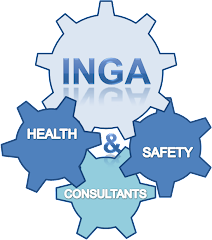Sunday, July 26, 2009
Mine Deaths - Tragedy or Economy?
I woke up this morning to a beautiful Zululand day, and suddenly my heart went out to the families of those men killed in our mines the last two weeks.
In an article in the Mining news the General Secretary of Cosatu called these deaths a national disgrace. Now im not a political activist, but i cant agree more. We are always willing to show solidarity and concern after having killed people by slosing sections of our operations whilst investigations are being done, but never commit to identifying pre-emptors to these tragedies, closing areas to afford us the opportunity to implement control measures to prevent these deaths.
Remove the fatality rate measurement - are we really willing to measure our success against the number of people we kill???
Tighten legislation and make directors, managers and owners directly liable for these deaths, while in the same breath directors, managers and owners should start taking action against employees who fail to adhere to safety requirements.
Its time for action - no more deaths - no more debilitating injuries - no more excuses - no more clever post incident solutions. In OHSAS 18001 we have a world class health and safety management system so its not that we dont know its just that we dont care enough. Maybe we are still a third world country if we only act when legislation is enforced!
Read the article: Deaths a National disgrace
Make a difference: Make every day a "Zero Harm" day, show that you care by acting, stop justifying ludicrous lagging indicators like fatality rates and define and manage proper leading indicators. Yes mining is dangerous but there is no need for it to be deadly! Its good to work, but having to die for your work is criminal.
Remember the families who no longer can share this sunday with their loved ones
Thursday, July 2, 2009
Health and Safety Program effectiveness - Employee participation
I am sure we have all stopped and asked ourselves, why is it not working? We have the documentation; we have appointed the necessary people yet we still keep having negative health and safety experiences. The simple truth is that most programs fail to collaborate and consequently there is a lack of participation and commitment at all levels.
Below we have a typical, yet simple matrix depicting the levels of employee participation:
1. Worker participation is not encouraged. Incentive programs are present which have the effect of discouraging reporting of incidents, injuries, potential hazards or symptoms. Employee representatives are not involved in the health and safety program, it is left to the appointed safety officer.
2. Workers and their representatives can participate freely in safety and health activities at the worksite without fear of reprisal. Procedures are in place for communication between employer and workers on health and safety matters. Workers are paid while performing safety activities.
3. Workers and their representatives are involved in the health and safety program, involved in inspection of work areas, and are permitted to observe monitoring programs and receive results. Workers' and representatives' right of access to information is understood by workers and recognized by management. A documented procedure is in place for raising complaints of hazards or discrimination and receiving timely employer responses.
4. Workers and their representatives participate in workplace analysis, inspections and investigations, as well as the development of control strategies throughout the organization. They have the necessary training and education to participate in such activities. Workers and their representatives have access to all pertinent health and safety information, including safety reports and audits. Workers are informed of their right to refuse job assignments that pose serious hazards to themselves pending management response.
5. Workers and their representatives participate fully in development of the safety and health program and conduct of training and education. Workers participate in audits; program reviews conducted by management or third parties, and collection of samples for monitoring purposes, and have necessary training and education to participate in such activities. Employer encourages and authorizes employees to stop activities that present potentially serious safety and health hazards.
How participative is your approach to Health and Safety?
• Is your system managed by a third party?
• Is your system a compliance dictatorship?
• Is your system a business partnership?
Informed, competent, empowered teams react safely to their environment.
Subscribe to:
Posts (Atom)

